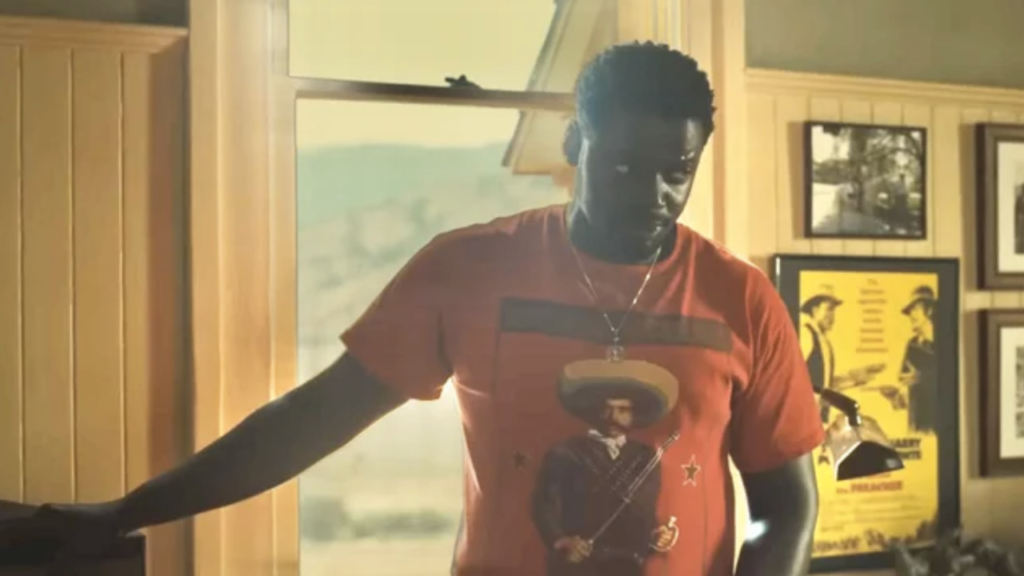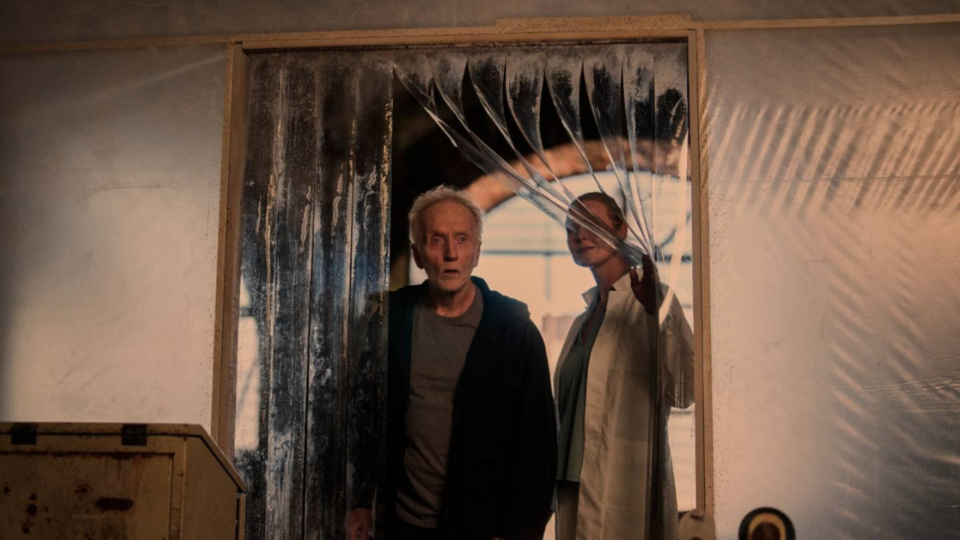‘Saw X’ Personifies Latin American Labor Exploitation

The relationship between Mexico and the United States has been a rough ride since the origins of their borders. Up until the 1800s natives from the Yaqui, Apache, and Navajo tribes were free to roam these lands. But once the “metaphorical” walls were put into place, the fight for land became vigorous.
There are many examples throughout American and Mexican history of the two countries fighting each other. But the battle for land predates borders. From day one of colonization, Europeans saw the land as a resource to exploit. This carried on over centuries and it is still a problem today.
You can find modern examples of this type of exploitation in modern films such as Jordan Peele’s vaquero epic Nope. While this is just a small reference in such a thematically dense film, we see it through Daniel Kaluuya’s character OJ Haywood as he wears a Rage Against the Machine shirt with Emiliano Zapata’s face in the center of the frame. Emiliano Zapata, who was one of the key players in the Mexican Revolution, fought for land back against the government and haciendas who exploited Indigenous people for their labor.

But this isn’t the first time Jordan Peele uses this medium to speak upon these issues. His debut film Get Out is also blatant with the display of exploitation towards POC characters. In this case it’s seeing Black people as nothing more than bodies for them to take. There are other horror films that are subtle with their approach to this theme. But sometimes you need a film to be transparent like Get Out and Diego Hallivis’ American Carnage.
In this film, we see how American companies see Latine Americans who come from immigrant families. To them they are nothing more than a people to exploit for their labor and bodies for resources. These types of stories are becoming more prevalent as the viewpoint of certain Americans, typically conservatives, are unashamed of their prejudice towards POC people.
An example that comes to mind is DeSantis’ plan to invade Mexico day one if appointed president. This is according to the Republican presidential debate from earlier this year. His reasoning being to counter the cartels who he claims is bringing fentanyl over to the United States. Although it is known Americans are also smuggling over a huge portion through legal ports. While we may never know the true intentions behind this idea, it’s important to note one of Mexico’s recent orders. Mexico nationalized the lithium mines in order to stop foreign countries from attempting to extract this resource for themselves.
The intention of rich and powerful Americans exploiting Latines, whether in the United States or in a Latin American country, is prevalent within my psyche. Contemporary films like American Carnage are bringing awareness to these kinds of issues. The problem is, indie films like these are tough to reach the general mass. Luckily, one of horror’s largest IPs decided to join in and highlight the issue. Kevin Greutert’s Saw X has plenty to say regarding this. He places the iconic John Kramer (Tobin Bell) in Mexico in search for a cure of his cancer.
The brilliance behind Saw X is placing the narrative of the film between the first two entries of the franchise. The audience witnesses John Kramer at his most vulnerable state. This is saying something as throughout the franchise we see him attempting suicide, corrupt officers attacking him and eventually his death. But still, we see Kramer blindly follow Cecilia Pederson (Synnøve Macody Lund). She tempts him with hope like a jockey dangling a carrot in front of a horse. What he doesn’t know is Cecilia is a con artist. She goes to different Latin American countries to perform her scam. She hires locals to impersonate doctors and other doctor personnel in order to trick people with fatal illnesses.
Cecilia’s character is the epitome of how many rich people operate and view the working class. They’re nothing more than subordinate bodies that she can easily discard without a trace. In doing so Cecilia uses Jigsaw’s traps to her advantage. Before enduring the traps, Greutert does a great job at portraying the lives and economic status of the four Mexican characters. Starting with Gabriela (Renata Vaca) who stole both Kramer’s and Amanda’s (Shawnee Smith) heart. She is a drug addict, a person Amanda can completely emphasize with. Diego (Joshua Okamoto) drives tourists around in a taxi cab, completely dependent on the fare and tips of tourists. Mateo, who has the most stable job still has to resort to selling pills. And the last of the group is Valentina (Paulette Hernandez), who is a sex worker.
On the other end we have Cecilia who is rich and powerful. She is the personification of the exploitation towards Latin America and its people. The act of Latin American exploitation is still an ongoing problem. You can see it with certain American and Mexican agreements. What comes to mind are the maquiladoras which are manufacturing plants. Originating in Mexico during the 1960s, the United States has been able to place these factories on Latin American soil. They make their products with the labor of locals at a cheap price and are tariff and tax free. In other words, they are exploiting the locals for the United States’ greed under the name of capitalism. Some of these locals inside the maquiladoras are working in sweatshop style conditions with terrible conditions and exposure to toxic chemicals. In a way Cecilia treats her four Mexican workers the same.

Once Kramer undergoes the fake procedures and discovers the scam Cecilia pulled, he does what he does best. He captures these flawed people and puts their will to live to the ultimate test. First Kramer captures Diego to retrieve information. After receiving what he wants, Kramer gives Diego the same equal chance he gives all his victims. After a gruesome three minutes of having to mangle his forearms, Diego survives the trap and is set free. Once the remaining four are captured, Cecilia’s evil demeanor comes into play.
Upon waking up everyone instantly starts yelling for help, Cecilia stays calm and studies her surroundings. She keeps this demeanor and fake care once the game starts for all four of them. Starting with Valentina, it first appears as if Cecilia has Valentina’s survival in mind. But when her death arrives, nothing but a flinch comes from her. While on the other hand, Gabriela and Mateo scream at the bloody aftermath of Valentina’s decapitation. The same goes for trying to help Mateo out of his test. She tries to console him as he must remove a specific amount of brain matter in order to survive. Unfortunately, he fails the test. The final Mexican victim of Jigsaw’s game is Gabriela.
Gabriela’s character plays a huge part in depicting Cecilia’s exploitative nature. Just like with Valentina and Mateo, Cecilia attempts to help Gabriela. This time she is successful. Cecilia tells Gabriela to break her wrist first as the chain would swing her body away from the radiation machine. Those extra few seconds away from the machine helped Gabriela escape the trap thus allowing herself to survive. But as she did get badly burned she becomes immobile and is in desperate need of medical attention. This is not only the turning point of the film, but the turning point of Cecilia’s true self. This is when we see how Cecilia truly sees the people around her as pawns in her game.

The first twist of Parker Sears (Steven Brand) being in cahoots with Cecilia came as a shock. With Sears and Cecilia having the upper hand she places Kramer and Amanda into the final trap. In the process to show how serious Cecilia is, she steps on the back of Gabriela’s neck. It kills her instantly without remorse. She then claims Kramer helped her tie up the loose ends by killing everyone involved. Her plan to keep all the money is now made easier. This not only shows the exploitative nature of Cecilia but we see the difference between her and Kramer.
While Kramer is twisted in his own way by thinking he can play God with human lives, he gives his victims a chance to live for a price. It’s up to the victims to surpass the trials of death. A question that consistently arises in Saw X and the rest of the franchise is whether Kramer’s actions are justified. Directors have used the films to display that Kramer doesn’t deliberately kill for the sake of it. This can’t be said for Cecilia who killed Gabriela in cold blood. This is a testament to Kramer and his willingness to put anyone to the test regardless of race, gender, ethnicity, and economic status.
While Saw X does come with plenty of flaws, there’s plenty to enjoy. Greuter goes out of his way to bring life to a franchise that has lost its step along the way. Changing the setting and continuing the critiques that were being said in Saw 6 about the corruption in the healthcare system is what helps this film shine. Saw X’s critique of Latin American exploitation and setting the film in Mexico is clever. But of course, this wouldn’t be a Saw film without the copious amount of bloodshed and cringe-worthy traps. Saw X delivers on this and so much more. This breath of fresh air has piqued my interest in what the franchise has in store.
Categorized:Editorials Horror En Espanol
